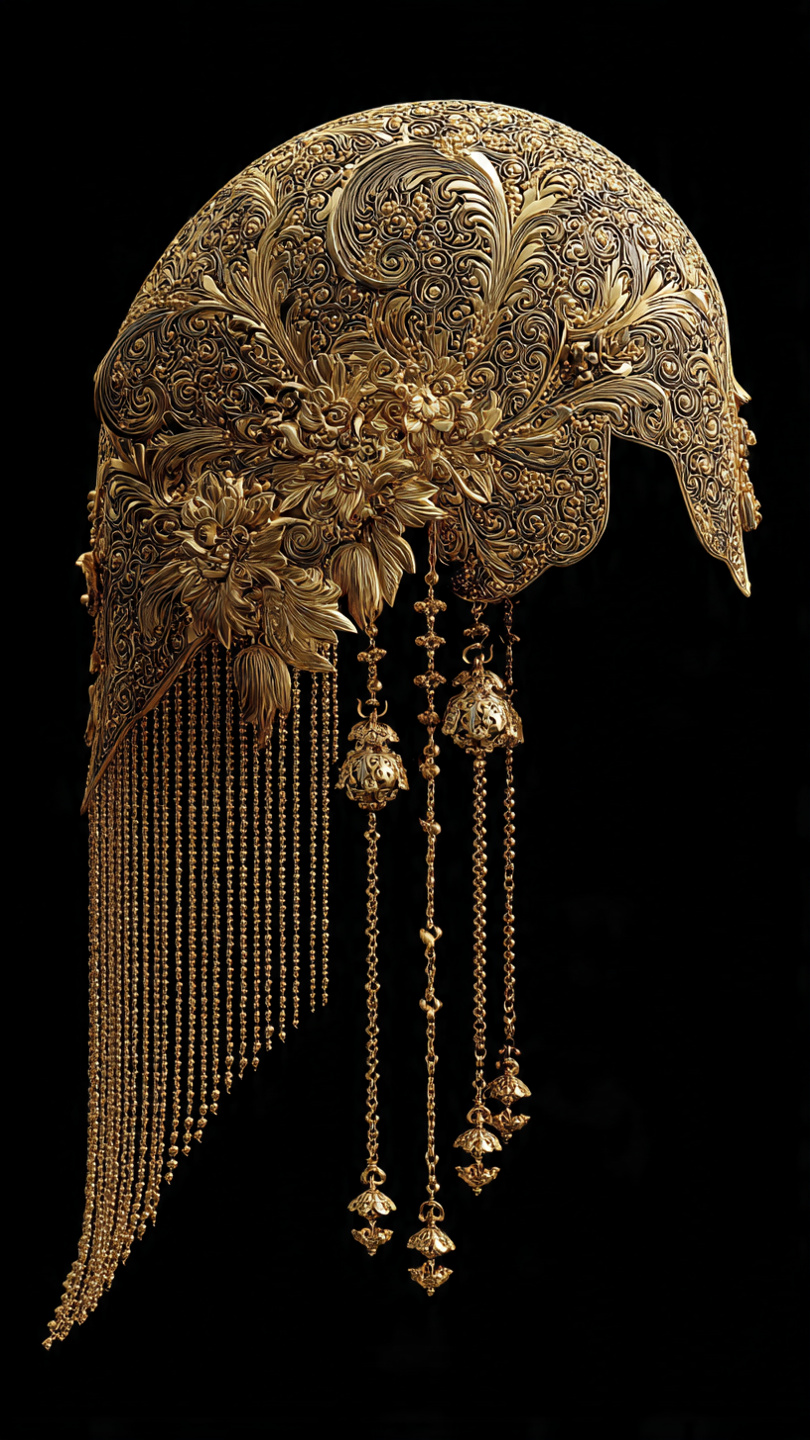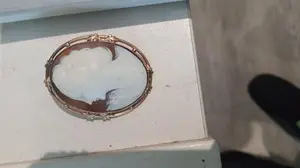Australian Gem Opal
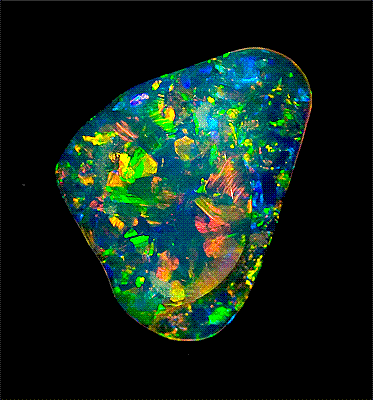 Black Opal Black Opal |
The Australian Gem Opal is basically a form of Silica that's chemically similar to quartz but not as hard on the Mohs Scale. Opal was first discovered in Australia near Angaston, in South Australia in 1849 and it just so happens, that over 90% of the world's Opals are from Australia. You can read about the famous Aurora Black Opal from Australia Here...
Opal is formed as a result of a replacement of the organic material "wood" with opal. The replacement material is called Opal and consists of tiny layers of silica spheres structured in a regular pattern. Amber Gemstone is another organic gem and the result of biological processes, formed millions of years ago.
Gem Opal Value
Guidelines for determining the price of Opals have been mainly unsuccessful and this is because of the gem's infinite variation in color and pattern which is extremely hard to put into a neat, square box. The three main factors in fixing the price paid for Opals are:
- Background Color: Black Opal is more valuable than light Opal.
- Dominant Fire Color: Red Fire Opal is more valuable than a predominantly green Opal, which in turn is more valuable than an Opal showing only blue color. But Gem Opal is a play of color, the more vibrant the opal, the more valuable it is.
- Color patterns: 'Harlequin Opal' in which the color occurs in patches. The Harlequin is the prize and usually more valuable than 'Pinfire Opal' in which the color is in specks.
Caring for Opals
Opals need care and attention just like other precious gems, ranked low on the Mohs Scale of hardness. However, don't kill your opal with kindness; the rule here is: less is more. Simply rinse Opals in freshwater to refresh them, without the use of harsh chemicals, detergents or abrasive cleaners. Use a bowl of water, not the kitchen or bathroom sink as you don't want your precious opal gem disappearing down the kitchen sink hole! Wipe your Opals with a lint-free cloth. More cleaning tips for opal and gemstone jewelry can be found Here...
Treated Matrix Opal
Matrix Opal can be treated or "cooked" with a solution of sugar and then sulphuric acid to enhance the color (that tends to diminish in vibrancy over time). If the price looks too good to be true, it probably is!
Types of Gem Opal
Black Opal - Black body color with features of manganese oxide as the host rock. See Aurora Australis Black Opal!
Crystal Opal - Transparent or very translucent.
Boulder Opal - Dark with iron-stone as the host rock.
Milky Opal - Opaque. Mainly found in Coober Pedy, the Opal capital of the world.
Composite Opals
Doublet - A composite of light natural Opal cemented together on either common Opal or base material.
Triplet - A composite of light natural Opal cemented to either common Opal or base material plus clear quartz or glass.
Synthetic Opals
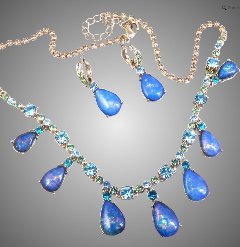 The Liz Claiborne "Lizard-skin" Opal Necklace & Earring Set
The Liz Claiborne "Lizard-skin" Opal Necklace & Earring Set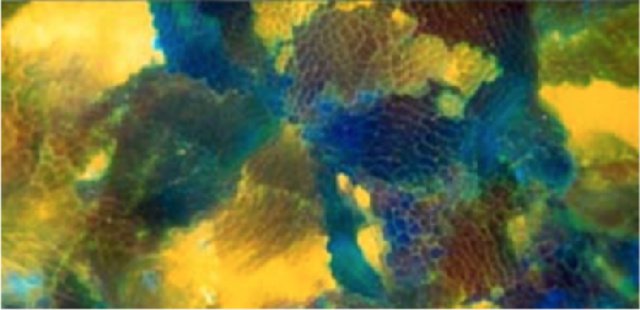 Gilson Synthetic Opal - Is it a Natural Opal or a Colourful Lizard?
Gilson Synthetic Opal - Is it a Natural Opal or a Colourful Lizard?Gilson Opal - Synthetic
Synthetic Opal is produced in the laboratory and has a similar structure to that of precious genuine Opal. Gilson Opals are a good example of true synthetic Opals with colors that closely resemble a natural Opal.
The following observations though will differentiate between Opal gem and Synthetic or Faux Opal:
- Synthetic Gilson Opals have what looks like a "lizard skin" imprint on the surface that's unmistakable under good light and magnification.
- Synthetic Opal generally shows brighter colors, and color patches are often larger than in Natural Opal.
Synthetic Opal has numerous sub-grains that produce a distinctive "snakeskin" pattern.
Synthetic Opal has a more ordered pattern of colors (generally). The reason is that artificial Opal does not duplicate the complexity and intricate pattern of Natural Forming Gem Opal.
Monarch Opal - Newest Synthetic Opal
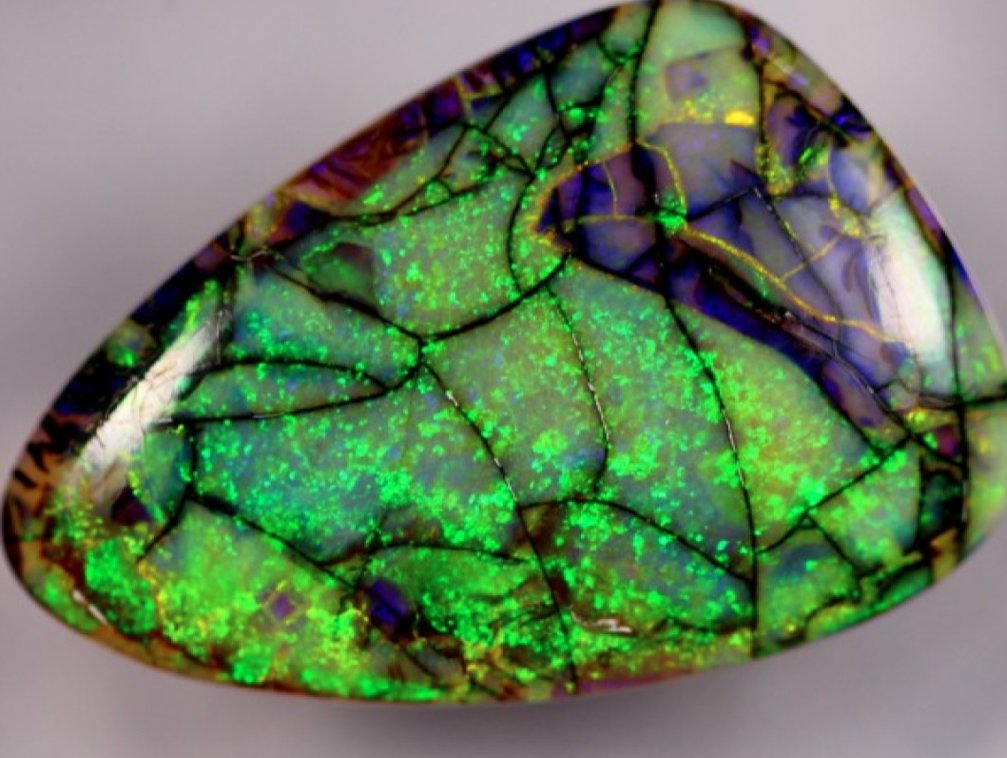 Monarch Synthetic Opal Monarch Synthetic Opal |
 Monarch Butterfly Monarch Butterfly |
The Monarch Opal is the newest synthetic Opal. The biggest clue that this opal is not natural is the very black inclusion lines - they just are too good to be true. The stone is named after the Monarch Butterfly and when you see the Monarch Butterfly with the signature black veins on the wings, it's not hard to see where the Monarch Opal takes its name.
"Aurora Australis" Image Courtesy: http://www.cooberpedy.sa.gov.au
"Gilson Opal" Image Courtesy: http://www.yourgemologist.com/syntheticopal.html
"Pride of Australia" Image Courtesy: http://www.opalsdownunder.com.au/learn-about-opals/introductory/famous-opals
Return to the top of Gem Opal
Return to Antique Jewelry Investor Home Page
Recent Articles
-
Prai Kamarru: A Tale of Ancient Inspiration
Nov 10, 25 09:30 PM

-
Vintage Cameo brooch
Nov 04, 25 12:38 AM
Left faced Cameo brooch. 10 k rose gold Reply to this message for more details. -
Golden Veil of the Ancients: Unveiling the Mystique of Karang Tepas
Nov 04, 25 12:00 AM
